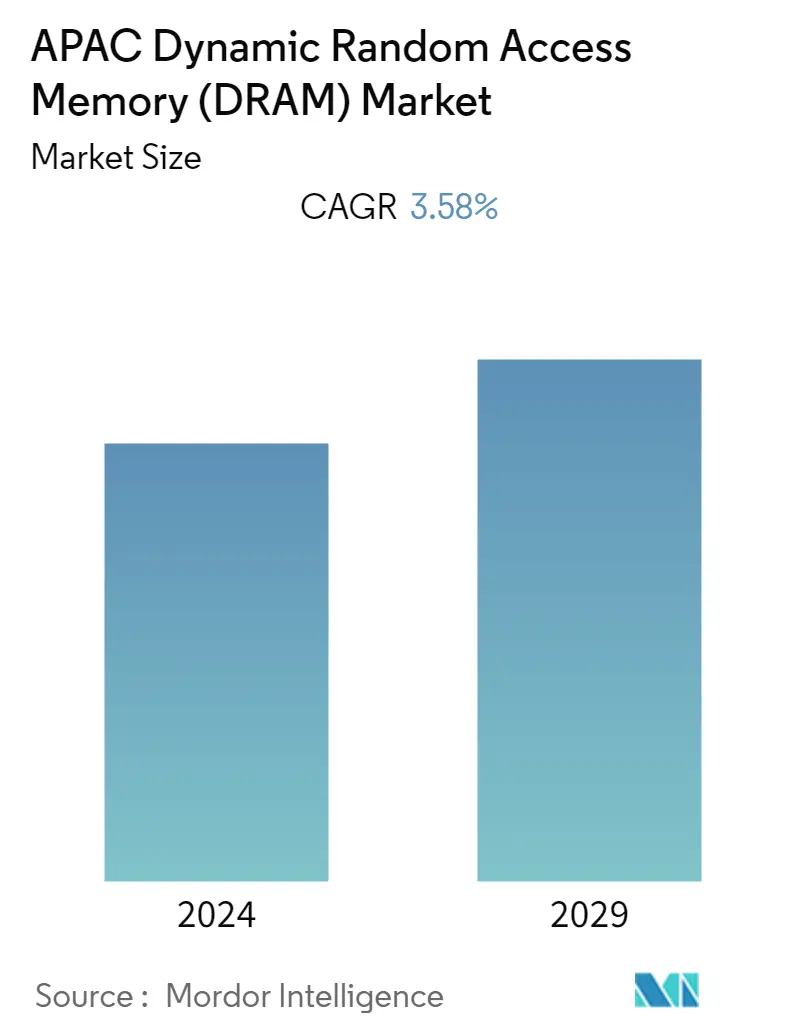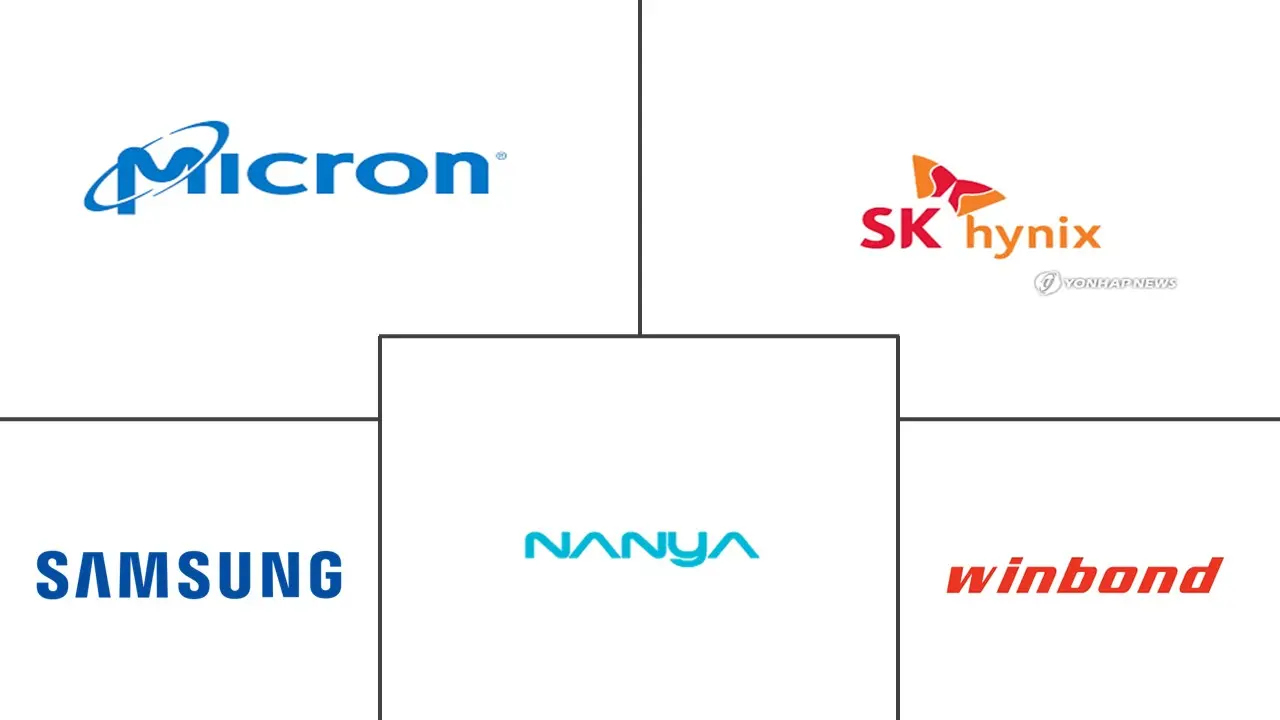Market Size of APAC Dynamic Random Access Memory (DRAM) Industry

| Study Period | 2019 - 2029 |
| Base Year For Estimation | 2023 |
| Forecast Data Period | 2024 - 2029 |
| Historical Data Period | 2019 - 2022 |
| CAGR | 3.58 % |
| Market Concentration | Low |
Major Players
*Disclaimer: Major Players sorted in no particular order |
Need a report that reflects how COVID-19 has impacted this market and its growth?
APAC Dynamic Random Access Memory (DRAM) Market Analysis
The Asia-Pacific dynamic random access memory (DRAM) market is valued at USD 40.99 billion in the current year. It is expected to reach USD 50.57 billion while registering a CAGR of 3.58% during the forecast period.
- DRAM is a high-volume commodity memory semi-components generally used in smartphones, tablets, PCs, and servers. Historically, DRAM memory technology has gone through die shrinks. With the release of the advanced memory module, the x/y memory cell pattern on the silicon wafer is turning smaller and smaller.
- Consumer products, like tablets and cameras, industrial equipment and sensors, automotive systems, and medical devices, depend upon DRAM flash memory, incorporated alongside their processors that store data and the code they execute. However, data centers find utilization in DRAM flash memory due to its near real-time reaction to reading/write requests and high data transfer rate. As the need for massive data processing for artificial intelligence and machine learning applications increases, the DRAM storage trend will likely continue to evolve.
- In May 2022, the Overseas Economic Research Institute (OERI) of the Export-Import Bank of Korea estimated that the technological gaps between Korea and China in the memory semiconductor sector were five years for DRAMs and two years for NAND flashes. In response to the launch of new CPUs by Intel Corporation and AMD that support DDR5 DRAM solutions for PCs and servers, South Korean suppliers are developing solutions to complement the arrival of the new CPUs.
- In March 2022, ChangXin Memory Technology (CXMT) announced its plan to manufacture DDR5 in the Chinese market. CXMT's ambitions ramped up recently due to significant investment from its parent company, Ruili Integration. The company aims to invest in more R&D and boost production facilities/capacity.
- However, the rising price sensitivity with ever-growing features in tablets and smartphones is also driving fewer sales for such electronic devices, which is expected to lower the need for DRAMs. The long-life cycle of DRAMS delivers one-time investments for memory solutions unless affected by severe damage, thus, slowing down the manufacturing need for DRAMs and adding challenges to the vendors in the market.
- The electronics device sector was impacted immensely by the COVID-19 outbreak, as China is one of the prominent suppliers of raw materials and finished products. The industry, amid the pandemic, faced a drop in production, disruption in the supply chain, and price fluctuations. The sales of major electronic companies were affected during the period. The travel restriction on people and products hampered the market's growth in the short run. However, the COVID-19 outbreak negatively impacted the smartphone industries and spurred the need for server and PC memory for stay-at-home activities. Driven by important megatrends like cloud computing, AI, and the IoT, the memory market experienced extraordinary growth post-COVID-19 and is anticipated to drive recovery for the market during the forecast.
